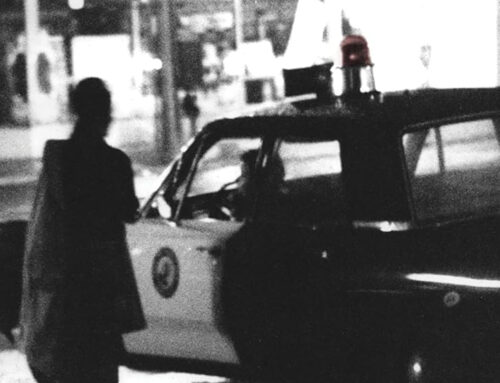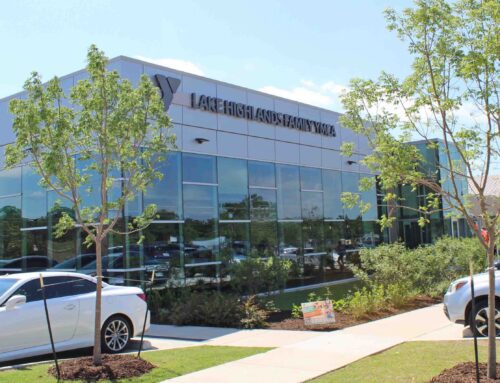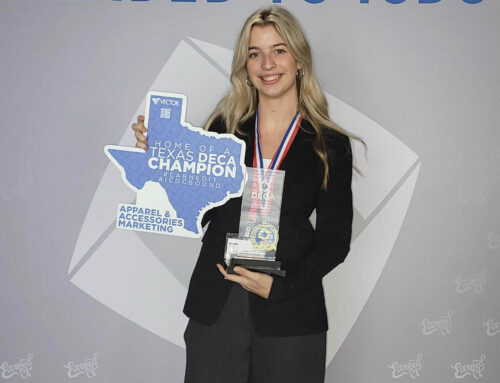Misconception: The Arboretum plans to build a parking garage at Winfrey Point.
Fact: This is completely untrue. The Arboretum is currently exploring options to build a parking structure on the other side of Garland Road, across from the Arboretum. This misconception appears to have resulted from a conceptual scenario created by the firm of Wallace Roberts & Todd who undertook a study of the trail system and options for Winfrey Point for the Park Department. This concept for a parking garage at Winfrey Point was never shown to the Arboretum, nor to the Park Board or City Council members and, according to the Park Department, was rejected as a concept when their consultants showed it to them, so it was never explored or presented to others.
This is one example of several issues addressed in a document posted on the Dallas Arboretum home page entitled “Winfrey Point: Misconceptions and facts”
Below, you can read the whole thing.
MISCONCEPTIONS AND FACTS
MISCONCEPTION: Winfrey Point is an endangered ecosystem and it contains pristine, native grasses and rare “Blackland Prairie.”
FACT: Not true. The Arboretum has many horticulturalists on staff and has consulted with outside experts. The truth is that the grasses at Winfrey Point are mainly invasive non-native grasses, which actually threaten other true grasses around White Rock Lake.
It was also noted, in a sworn affidavit, by Mr. Robert O’Kennon, a respected authority on documenting plant life, grasslands and other flora throughout Texas and co-author of the 1,626 page book, Flora of North Central Texas, “I carefully examined the types of grasses growing at Winfrey Point. I did not see a single native grass. All of the species of grass I found growing at Winfrey Point were non-native species… These non-native grasses are not indigenous to, or naturally found in, this area. Among these non-native grasses were several very, very invasive and aggressive grasses, including Johnson Grass and K.R. Bluestem. Such invasive non-native grasses choke out and destroy any natural or native grasses and other native wildflowers and other flora in this area. There are other native grass areas in the White Rock Lake Park, but Winfrey Point is not one of them, and the species found at Winfrey Point pose a threat to the other areas of White Rock Lake that still have natural, native grasses and plants. These non- native grasses and plants at Winfrey Point need to [be] kept under control and appropriately mowed or eradicated to attempt to prevent their spread to and the destruction of the other regions of White Rock Lake Park with native flora. The term ‘Blackland Prairie’ refers to a common type of soil… and has nothing to do with the type of grass of other vegetation that grows on it. There are over 12,000,000 acres of Blackland Prairie soil in North Central Texas alone, and the residential subdivisions around Winfrey Point were built on Blackland Prairie soil.”
Mr. O’Kennon has been involved in botanical research and has worked for over thirty (30) years documenting plant life, grasslands and other flora throughout Texas, every state in the United States, as well as all over the world. Additionally, he has written or co-authored five books and over 100 peer-reviewed articles treatises on scientific botany, including: Flora of North Central Texas, the first illustrated flora of any region of Texas or adjacent states; the Flora and Natural History of Gillespie County, Texas; and, Schoenoplectus Hallii (Cyperaceae), A Globally Threatened Species New for Texas. He is currently collaborating on publishing a field guide of the hawthorns of the world, and writing a three-volume work on the flora of East Texas.
Page 1 of 5This was also a finding of Fred Smeins, Ph.D from Texas A&M University who served as an additional ecological consultant. He noted that after examining the three areas where parking would have taken place, that “they are currently not representative of the pristine prairie… The majority of the vegetation consists of exotics, invasive grasses including annual rye grass, KR bluestem, Japanese brome, jointed goat grass and others as well as many species of native annual broadleaved plants, that while attractive during their time of flowering, are indicative of significant past disturbances… Total rest from use will not enhance the potential for natural succession to occur and in all likelihood the invasive species will continue to persist and increase.’’ He reiterated at the end that “these areas do not represent remnants of the original pristine Blackland Prairie.”
Dr. Fred E. Smeins is Professor of Ecology in the Department of Rangeland Ecology and Management, Texas A&M University. He received his BA (1963) in Biology from Augustana College and his MA (1965) and Ph.D (1967) in Plant and Animal Ecology from the University of Saskatchewan. Dr. Smeins teaches both undergraduate and graduate courses in ecology and natural resource management. He has received several university and professional society awards for excellence in teaching. His research focuses on understanding the structure and dynamics of rangeland (grassland, wetland, savannah) ecosystems as influenced by herbivory, soil, fire and weather. Factors that control the pattern and rate of plant succession and retrogression are primary objects of study.
MISCONCEPTION: The Arboretum plans to build a parking garage at Winfrey Point.
FACT: This is completely untrue. The Arboretum is currently exploring options to build a parking structure on the other side of Garland Road, across from the Arboretum. This misconception appears to have resulted from a conceptual scenario created by the firm of Wallace Roberts & Todd who undertook a study of the trail system and options for Winfrey Point for the Park Department. This concept for a parking garage at Winfrey Point was never shown to the Arboretum, nor to the Park Board or City Council members and, according to the Park Department, was rejected as a concept when their consultants showed it to them, so it was never explored or presented to others.
MISCONCEPTION: Winfrey Point has never been used for parking for the Dallas Arboretum.
FACT: On the contrary. The Dallas Arboretum has used sections of Winfrey Point for overflow parking for special events for years as have various other event holders. About five years ago, The Park Department ceased mowing at Winfrey Point for budgetary reasons. This reduced available parking to 120 spaces and allowed the current very invasive, non-native plants to spread. Equally important, the lack of space during special events since that time have forced cars into the grasses, onto the road sides of the Lake and into adjoining neighborhoods. There have been news reports of police ticketing cars in this area and a concern of fires starting when cars park on tall grass. An article in the Advocate noted the sighting of 1,000 cars on a particular
Page 2 of 5
weekend. Although the Arboretum had received permission for a five-week period to park at Winfrey Point during our parking lot construction, we were not there that day.
The Arboretum requested permission again for temporary parking if needed, for any surge need on the highest attendance days during the Chihuly exhibit. During this interim time, at the City’s request the Dallas Arboretum agreed to prepare the area for parking after it had been mowed by the city, provide on-site parking management for events at Winfrey Point, coordinate reservations with DPARD, and work with the various user groups to improve parking, safety and traffic flow.
Mowing approximately 3.5 acres for this area in the back section of Winfrey Point was intended to reduce the tall grasses – again, which are aggressive and invasive – but would also be a fire hazard under hot car engines.
MISCONCEPTION: The existing parking facilities around the Lake are sufficient to handle the demands of Lake users and those coming to Winfrey Point.
FACT: On the contrary, and this is the real issue. The Arboretum became involved at the request of the DPARD in studies and in helping with this issue because there are limited actual parking “spaces” on the east side of the Lake. Events in the Park routinely attract hundreds, occasionally thousands of users and visitors. For example, there are approximately 15 major running events each year. One of the most common complaints of residents in neighborhoods adjoining the park is that visitors crowd the residential streets with cars. It is not uncommon for 500-1,000 cars to be dispersed along or around the Lake, in front of stores and businesses and in near-by neighborhoods. As reported by the Advocate on April 3, longtime White Rock activist Ted Barker was quoted regarding White Rock Lake that “the city needs about a thousand more parking spaces out here. That would take about 11 acres and the entire area would be paved.”
Another supporter noted that the Lake has “been loved to death.” Parking is a real issue and must be addressed, whether or not the Arboretum is involved.
MISCONCEPTION: Decisions have already been made about Winfrey Point.
FACT: Again, to the contrary. Sheffie Kadane, the City Council Representative from this area, Gerry Worrall, its Park Board Representative and Joan Walne, Park Board President have all stressed that these are ongoing discussions. There are indeed a number of proposals to improve the Lake, to address parking and to present alternatives to current traffic patterns. Each of these requires study, funding, testing, and discussion with stakeholders to see if it is in the best interest of the majority of user groups.
In addition to addressing the parking issues, ideas include: the option of opening a gate onto Lawther Drive from the Arboretum for walkers and runners, what sections of the Arboretum
Page 3 of 5
could be used if Lawther Drive had to be widened, could trams bring individuals to the garden to relieve congestion on Garland Road and replanting Winfrey Point with true native grasses, walking paths and educational signage. Some options were further studied by architects, traffic consultants and engineers to determine viability. As with any architectural study, concepts were developed before presentation to any decision making body. Our plans were to simultaneously consult with the Park Board and city staff as we do regularly as we are a part of the Park Board and on City of Dallas land, while receiving input from neighborhood groups, our Members and other interested parties before we endorsed any scenario. Ultimately, funding decisions require City Council approval and decisions about changes need to be decided first at the Park Board level.
Again, all the Arboretum asked for in 2012 was temporary parking at Winfrey Point for possible overflow, due to loss of other parking for construction and the Chihuly exhibit, a request we have periodically made over the past 30 years when such parking was needed. This lot would also meet the needs of those coming to Winfrey Point.
MISCONCEPTION: The Arboretum plans to pave Winfrey Point.
FACT: Once more, to the contrary. While we do believe a parking study of Winfrey Point will be needed for those other than our guests, the temporary parking being discussed is on 3.5 acres of existing acreage, which is grass, and would be available to all Winfrey Point and White Rock Lake users.
Any long term parking solution for land at Winfrey Point, the Arboretum feels, should rely heavily on permeable materials and sustainable landscaping with limited paving only for areas such as turn lanes or to accommodate heavier vehicles. Yet those decisions will not be made by us but by other stakeholders and ultimately the Park Board.
MISCONCEPTION: Plans for Winfrey Point have been held behind closed doors.
FACT: We certainly don’t believe that. The City, the Arboretum and many other groups involved have been discussing the need to address parking for some time. We have reached out to countless individuals and we talk regularly to the Park Department as we are a part of the City and manage this property for them, including parking. Since the Winfrey Point to Spillway Study first began years ago, there have been numerous meetings on the city’s part to determine the best way to manage the problems of parking, and the needs of the bikers, runners and walkers around the lake. As the Arboretum is a part of the city of Dallas and a major part of the East Lawther Drive study, we have participated in discussions about potential plans. We regret the perception that we were talking without the input of others even though in concept, and we will attempt to correct it in the future.





